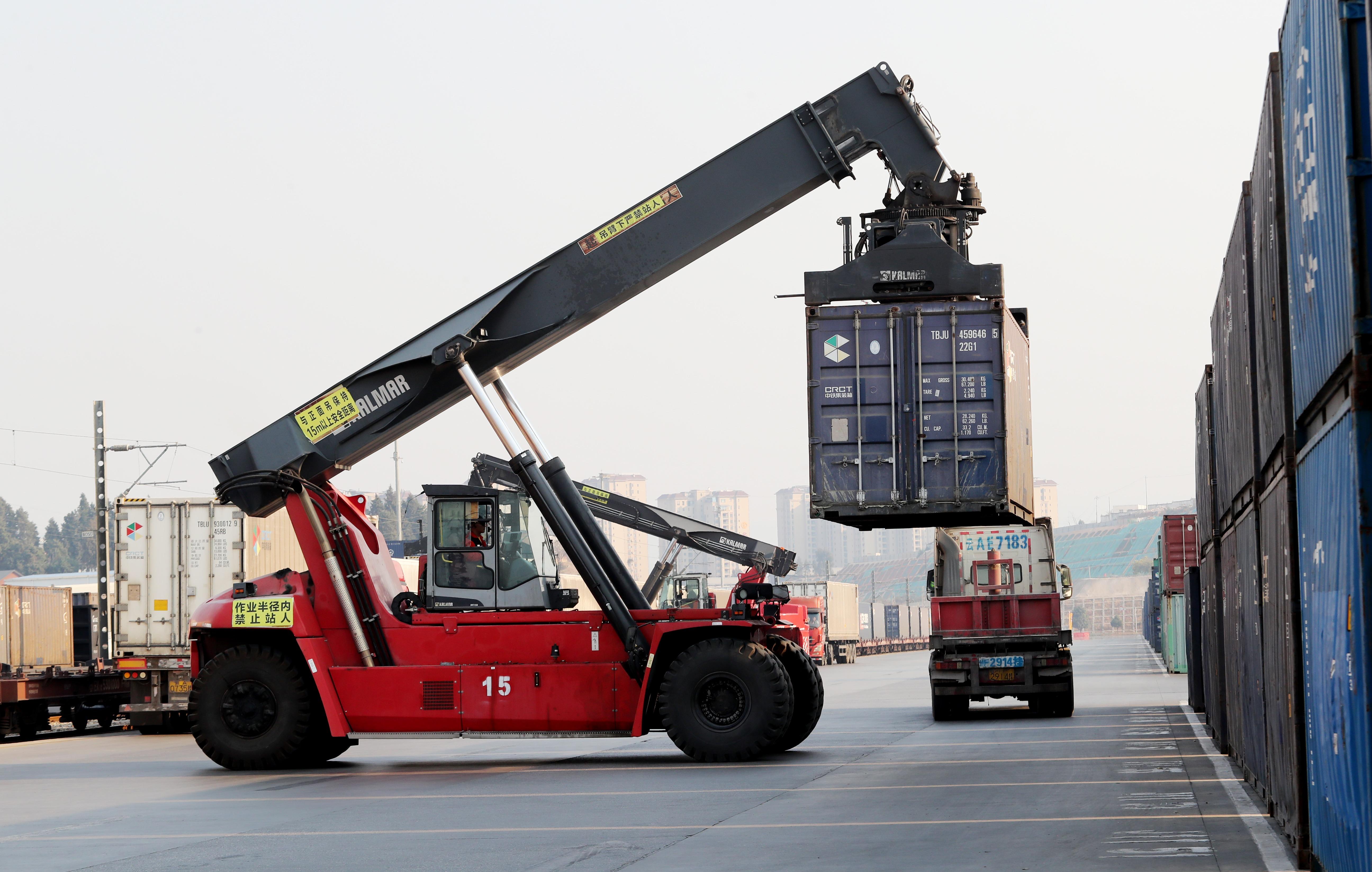 A worker at the freight yard in Kunming, capital of Yunnan province, loads a container onto a train bound for Vientiane, capital of Laos, on April 5. (YANG ZHENG / FOR CHINA DAILY)
A worker at the freight yard in Kunming, capital of Yunnan province, loads a container onto a train bound for Vientiane, capital of Laos, on April 5. (YANG ZHENG / FOR CHINA DAILY)
The China-Laos Railway has seen a significant increase in freight transportation this year, becoming an important logistics corridor between China and Southeast Asia.
The cross-border railway has operated for 502 days and during that time it handled 18.8 million metric tons of cargo, the railway's operators China Railway Kunming Group and Laos-China Railway Company, said on Wednesday.
The railway's Chinese section has handled 14.6 million tons of cargo and Lao's section has handled 4.21 million tons. Some 3.7 million tons have been cross-border cargo.
Since the beginning of this year, when epidemic restrictions were changed, more cargo has been transported via the line.
Since January, the line has handled an average of 56,000 tons of cargo daily, a year-on-year increase of 180 percent. It has handled 12,000 tons of cross-border freight so far this year, up 260 percent year-on-year.
The 1,035-kilometer cross-border railway is a landmark project of the Belt and Road Initiative.
With a design speed of 160 km/h, it links Kunming, capital of Southwest China's Yunnan province, and Vientiane, capital of Laos.
On Wednesday, lines of containers were seen at the freight yard of Yexianggu Railway Station in Xishuangbanna, Yunnan, an important freight station along the China-Laos Railway.
"The designed annual throughput of the freight yard is 750,000 tons of cargo, but last year the yard handled more than 1.6 million tons of freight, way beyond expectation," said He Chunrong, head of Yexianggu Railway Station.
The demand for freight transportation continues to grow this year at the station. As of Tuesday, the station had handled 608,000 tons of cargo for the year so far, he said.
Laotian beer is being transported using the cross-border service.
It saves costs and time, as well as reduces losses along the way, said Teng Hailin, general manager of Xishuangbanna Taiyuan Import and Export, the general agent for Laos Brewery Company in China.
Bottled beer has a high requirement for transportation and careless driving can cause broken bottles, Teng said.
"If drivers do not pay much attention to drive steadily, there will be damage to the goods such as broken bottles, which is a great loss for our company," she said.
Before the railway opened, the company used trucks to transport beer from Vientiane to China via road.
During the six-month monsoon season in Laos each year, up to 10 percent of the beer bottles transported were broken.
By using the train, nearly no bottles are broken during transportation, Teng said.
She noted the transport time from Vientiane to China has been reduced from 10 days to just three to four days. Since the beginning of this year, Teng's company has abandoned all truck transportation and turned to the railway.
The company has sent about 100,000 crates of Laotian beer — about 2.4 million bottles — to China this year, she said.
Zou Qiang, director of the sales department of Manlie Rubber in Xishuangbanna, a company that processes rubber, said the company has longed for the railway's opening.
"Now 98 percent of our products are transported via the railway. The cost has been reduced by about 5 percent," he said.
As our company's costs are reduced thanks to the railway, we pay more to rubber growers by increasing the rubber's price by 0.5 yuan (70 cents) per kilogram, benefiting more than 10,000 local rubber-growing families, he said, adding that it is a virtuous circle realizing a win-win situation.
Many Chinese cities have started operating cross-border trains along the China-Laos Railway and their products have been extended to countries in Southeast Asia such as Laos, Thailand and Singapore.


